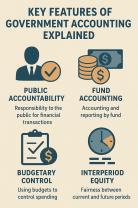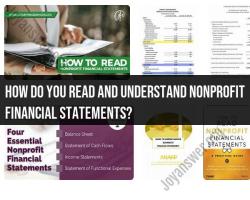How much do you really need to save for retirement?
The amount you need to save for retirement can vary greatly depending on your individual circumstances, including your lifestyle expectations, retirement age, current savings, and anticipated expenses. To estimate how much you need to save for retirement, you can follow these general steps:
Determine Your Retirement Age: Decide at what age you plan to retire. This will significantly affect the number of years you need to support yourself in retirement.
Estimate Your Retirement Expenses: Create a detailed budget that outlines your expected expenses in retirement. This should include housing, healthcare, food, transportation, entertainment, and any other costs you anticipate. Be realistic about your lifestyle and needs.
Consider Inflation: Take into account the impact of inflation on your expenses. What costs $50,000 today may cost significantly more in the future. Use an average inflation rate (e.g., 2-3%) to adjust your retirement expenses for each year of retirement.
Factor in Social Security and Other Income: Estimate any sources of retirement income, such as Social Security, pensions, or rental income. Subtract this income from your estimated expenses.
Determine Your Retirement Savings Rate: Calculate how much you need to save annually to meet your retirement goals. You can use a retirement calculator or work with a financial advisor to determine an appropriate savings rate.
Consider Investment Returns: Take into account the return on your investments. Investments in retirement accounts can grow over time, but returns can vary. Historical average returns for a balanced portfolio of stocks and bonds are typically used for estimates.
Emergency Fund: Set aside an emergency fund to cover unexpected expenses during retirement.
Healthcare Costs: Don't forget to budget for healthcare expenses, which can be substantial in retirement. Consider long-term care insurance and Medicare costs.
Review and Adjust: Regularly review and adjust your retirement savings plan as your circumstances change. It's important to stay on track and make any necessary course corrections.
Consult a Financial Advisor: Consulting with a financial advisor can be highly beneficial in helping you create a personalized retirement plan based on your specific financial situation, goals, and risk tolerance.
While there is no one-size-fits-all answer to how much you need to save for retirement, a common rule of thumb is the "4% rule." This rule suggests that you can withdraw about 4% of your retirement savings annually to cover expenses without running out of money over a 30-year retirement period. Keep in mind that this rule is a guideline and that your actual needs may vary.
It's crucial to start saving for retirement as early as possible, as compound interest can significantly boost your savings over time. Regularly review your retirement plan, make adjustments as needed, and seek professional advice to ensure you are on track to meet your retirement goals.
How to calculate your retirement savings goal based on your individual circumstances?
There is no one-size-fits-all answer to this question, as the amount of money you need to save for retirement will vary depending on your individual circumstances. However, there are a few factors to consider when calculating your retirement savings goal, such as:
- Your age: The earlier you start saving for retirement, the more time your money has to grow.
- Your income: The higher your income, the more money you will need to save in order to maintain your lifestyle in retirement.
- Your expenses: The lower your expenses in retirement, the less money you will need to save.
- Your desired lifestyle in retirement: Do you want to travel extensively? Downsize your home? Work part-time? Your desired lifestyle in retirement will impact how much money you need to save.
What factors influence the amount you need to save for retirement?
There are a number of factors that can influence the amount you need to save for retirement, including:
- Inflation: Inflation is the rate at which prices for goods and services increase over time. As inflation increases, the purchasing power of your savings decreases. This means that you will need to save more money in order to maintain your lifestyle in retirement.
- Healthcare costs: Healthcare costs are expected to rise significantly in the coming years. This means that you will need to save more money to cover your healthcare costs in retirement.
- Longevity: People are living longer than ever before. This means that you may need to save more money to support yourself in retirement.
What are some retirement calculators and tools to help with savings planning?
There are a number of retirement calculators and tools available to help you with your savings planning. Some popular options include:
- AARP Retirement Calculator: This calculator helps you to estimate how much money you need to save for retirement, based on your individual circumstances.
- Fidelity Retirement Planner: This planner helps you to create a personalized retirement saving plan, based on your goals and risk tolerance.
- T. Rowe Price Retirement Savings Calculator: This calculator helps you to estimate how much money you need to save for retirement, and how your savings will grow over time.
What are the advantages of starting to save for retirement early?
There are a number of advantages to starting to save for retirement early, including:
- Compound interest: Compound interest is the interest that you earn on your savings, plus the interest that you earn on the interest that you have already earned. Over time, compound interest can add up to a significant amount of money.
- More time to save: The earlier you start saving for retirement, the more time your money has to grow.
- More flexibility: If you start saving for retirement early, you will have more flexibility in how you save and invest your money.
- Less stress: Knowing that you are saving for retirement can give you peace of mind and reduce your stress levels.
How to adjust your retirement savings plan as your life circumstances change?
As your life circumstances change, you may need to adjust your retirement savings plan. For example, if you get a raise or start a family, you may need to increase your savings contributions. If you experience a job loss or a major financial setback, you may need to reduce your savings contributions.
It is important to review your retirement savings plan regularly and make adjustments as needed. This will help you to ensure that you are on track to meet your retirement savings goals.
Here are some tips for adjusting your retirement savings plan as your life circumstances change:
- Review your retirement savings plan regularly. This will help you to identify any changes that need to be made.
- Consider your individual circumstances when making adjustments to your plan. For example, if you are getting close to retirement, you may want to focus on protecting your savings rather than growing them.
- Seek professional advice if you need help. A financial advisor can help you to create a retirement savings plan that meets your individual needs and goals.
By following these tips, you can ensure that your retirement savings plan is on track to help you achieve your retirement goals.













